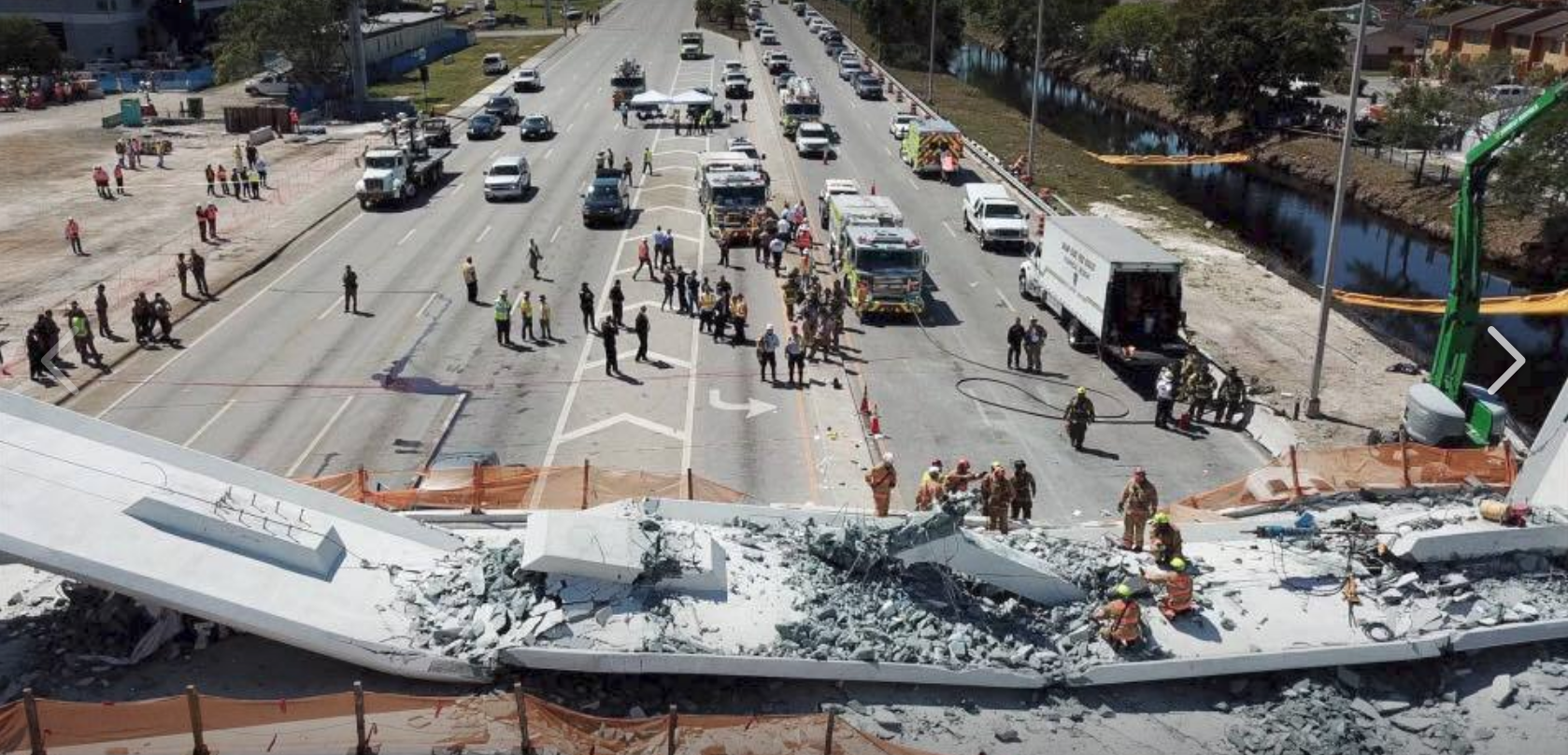Workers on the doomed Florida International University pedestrian bridge were adjusting the bridge’s tension rods when it collapsed onto cars below, the US National Transport Safety Board has confirmed.
Six people were killed on March 16 when the bridge, built to protect pedestrians crossing a busy motorway between the FUI campus and accommodation, crushed eight cars under 950 tons of concrete and steel. Workers had installed the bridge overnight only five days before the disaster.

Using modular construction methods, the main span was assembled off-site and moved into place to avoid closing traffic. FIU touted it as the largest pedestrian bridge in the US to ever use the innovative method.
The NTSB is investigating the cause of the disaster. It confirmed in a statement that workers were adjusting tension on the two tensioning rods located in the diagonal member at the north end of the span when the bridge collapsed. They had done this same work earlier at the south end, moved to the north side, and had adjusted one rod. They were working on the second rod when the span failed and collapsed.
Questions have been raised as to why the road was not closed while this work was being performed.
The NTSB is testing a number of components from the area where the bridge collapsed, including sections of the floor, the canopy, a vertical member and a diagonal member and core samples.
While segments of the bridge are being transported to and stored at an FDOT facility, there are no plans to reconstruct the bridge as part of the NTSB investigation into why the bridge collapsed. The nature of the structure and the way it failed make reconstruction impractical.
NTSB expects to release a preliminary report in the coming weeks, although it says the report will not contain analysis or address probable cause.
The bridge was being built by construction firms Munilla Construction Management and FIGG Bridge Group.
Cracks were observed
The bridge’s lead engineer had reported cracks appearing in the bridge in the days leading up to the disaster.

The Florida Department of Transportation (FDOT) has released a transcript of a voicemail left on a landline on Tuesday, March 13, by Denney Pate, FIGG Bridge Group’s lead engineer “responsible for the FIU pedestrian bridge project”.
The transcript reads:
“Hey Tom, this is Denney Pate with FIGG bridge engineers. Calling to, uh, share with you some information about the FIU pedestrian bridge and some cracking that’s been observed on the north end of the span, the pylon end of that span we moved this weekend. Um, so, uh, we’ve taken a look at it and, uh, obviously some repairs or whatever will have to be done but from a safety perspective we don’t see that there’s any issue there so we’re not concerned about it from that perspective although obviously the cracking is not good and something’s going to have to be, ya know, done to repair that. At any rate, I wanted to chat with you about that because I suspect at some point that’s gonna get to your desk. So, uh, at any rate, call me back when you can. Thank you. Bye.”
“The voicemail was left on a landline and not heard by an FDOT employee until Friday, March 16 as the employee was out of the office on assignment. When the employee returned to his office today, Friday, March 16, he was able to listen to the voicemail,” the FDOT said.
The FDOT said it had issued a blanket permit allowing for two-lane closures effective from January through April, but never received a request to close the entire road and was unaware of any scheduled stress testing of the bridge.
"Per standard safety procedure, FDOT would issue a permit for partial or full road closure if deemed necessary and requested by the FIU design build team or FIU contracted construction inspector for structural testing," the FDOT said.
"The responsibility to identify and address life-safety issues and properly communicate them is the sole responsibility of the FIU design build team. At no point during any of the communications above did FIGG or any member of the FIU design build team ever communicate a life-safety issue."